The Sad Fate Of The Arab Christians – Analysis
The Arab Christians العرب المسيحيون or العرب المسيحيون have been part of the Arab world since the dawn of modern history. They have actively respected the predominance of Islam in the Middle East, and were instrumental in the protection and promotion of the Arab language and Islamic culture worldwide. Indeed, many people in the Middle East refer to them in an endearing fashion, strangely enough as it might seem, as: Christian Muslims.
The Arab Christians were always part and parcel of the Arab world: renowned politicians, writers, business people, actors, singers and Islam experts and when they migrated to Latin America in the 19th and 20th century, they took with them the Arab civilization and promoted it there by publishing newspapers, magazines, books, speaking the language and else.
In Lebanon the Arab Christians are known for their zeal in defending Arab culture and were the first to publish Arab language dictionaries sold worldwide and for a long period of time Beirut was the capital of Arab culture because of its publications of books and related cultural activities financed and led by these dedicated people.
Christianity In The Middle East
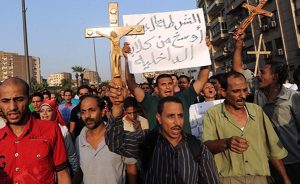
The lack of official data on the Christian populations of the Middle East makes it difficult to confirm their exact number, but it is estimated that there are between 12 and 16 million Christians living in this area. Christianity is, also, a monotheistic religion with its origins in the Middle East, and its teachings are based on the old and new testaments of the Bible. Many different Christian sects have their origins in the Middle East and are still present in the region. Just a few examples of these sects include: Maronite Christians, Greek Orthodox, Armenian Orthodox, Coptic and Chaldean Christians, among many others.
The Copts
Copts in Egypt constitute the largest Christian community in the Middle East, as well as the largest religious minority in the region, accounting for an estimated 10% of the Egyptian population. Most Copts adhere to the Coptic Church of Alexandria. The remainder of around 800,000 is divided between the Coptic Catholic and various Coptic Protestant churches.
Their position improved dramatically under the rule of Muhammad Ali in the early 19th century. He abolished the jizya (a poll tax on non-Muslims) and allowed all Egyptians (Copts as well as Muslims) to enroll in the army.
Copts participated in the Egyptian national movement for independence and occupied many influential positions. Two of their significant cultural achievements include the founding of the Coptic Museum in 1910 and the Higher Institute of Coptic Studies in 1954. Some prominent Coptic thinkers from this period are Salama Moussa, Louis Awwad and Secretary General of the Wafd Party Makram Obayd.
The Arab Christians
The Arab Christians are an estimated 13 million Christians still living in the Middle East in countries like Syria, Jordan, Palestine, Iraq, Iran, Israel and Lebanon. They are in Business, education, arts, finance, banking and politics.
The Christian presence in the Middle East dates back, of course, to the advent of Jesus Christ during the Roman Empire. The 2,000-year presence has gone uninterrupted since, especially in the countries of the Levant: Lebanon, Palestine/Israel, Syria and Egypt. But, it has been far from a unified presence. The Eastern and Western Church don’t quite see eye to eye and haven’t for about 1,500 years.
Lebanon’s Maronites split off from the Vatican, in a huff, centuries ago, then agreed to return to the fold, preserving the rites, dogmas and customs of their choice.
Much of the region either forcibly or voluntarily converted to Islam in the 7th and 8th centuries. In the Middle Ages, the European Crusades attempted, brutally, repeatedly but ultimately unsuccessfully, to restore Christian hegemony over the region.
Since then, only Lebanon has maintained a Christian population approaching anything like a plurality, although Egypt maintains the single-largest Christian population in the Middle East.
Pan-Arabism
Pan-Arabism was an ideology aspiring to unify populations supposedly speaking Arabic from the Atlantic Ocean to the Arabian sea, highlighting indirectly the cultural superiority of these people over their coreligionists speaking other languages. Pan-Arabism espoused socialist agendas and was notoriously opposed to western interventionism in the area and the latter’s creation of the State of Israel to defend its economic interests in the region and seek pardon for direct or indirect responsibility in the Holocaust.
For the pan-Arabists, the Arab world is, undoubtedly, one entity indivisible and its various nations are condemned to unite around Arabic language and culture only and to engage in unison in a fight against Western imperialism and domination and Zionism.
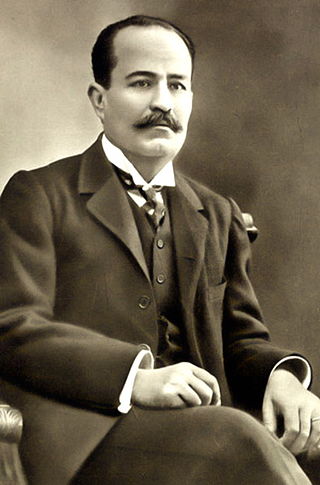
Pan-Arabism began with Jurji Zaydan (1861–1914) and his Nahda (Revival) movement. He was one of the first intellectuals to espouse pan-Arabism as a cultural nationalist force. He encouraged the use of modern version of the Arabic language, referred to as Modern Standard Arabic (MSA) in lieu of colloquial Arab countries versions to strengthen unity of the Arab world in order to break with the Muslim world and isolate religious identity. In a word, for him and all the following pan-Arabists, in the Arab world cultural identity has to have preeminence over religious identity.
Prominent Syrian thinkers such as, Constantin Zureiq, Sati’ al-Husri, Zaki al-Arsuzi, and Michel Aflaq played a key role in establishing pan-Arabist ideology in the Arab region. Aflaq and al-Arsuzi were, also, key figures in the establishment of the Arab Ba’ath Party (Arab Renaissance Party), and the former was for long its chief ideologist, combining elements of Marxist thought with nationalism. The pan-Arab ideology has been accused of inciting prejudice against or downplaying the role of ethnic minorities such as the Amazigh/Berbers of North Africa and encouraging the rise of military dictatorships such as with Nasser in Egypt, The Assads in Syria, Saddam in Iraq, Qaddafi in Libya, Boumedienne in Algeria and Ali Saleh in Yemen.
The main sin of pan-Arabism is that it ignored Islam and, thus, it became the undeclared enemy of Islamism in Egypt and elsewhere in the Muslim world. As a matter of fact, Gamal Abd Nasser of Egypt used the Ikhwan in his country Egypt to grab power and after achieving successfully his objectives, he ostracized them, horribly, during his reign and they only came back to prominence in the news and in active life after the assassination of President Sadat as a punishment for his historical visit to Israel in 1979.
The fall of pan-Arabism came about towards the end of the 70s of the last century for two main reasons. Firstly the advent of the Khomeini revolution in Iran in 1979 and the subsequent renaissance of Islamism, another patriarchal and undemocratic movement and religious ideology that gave birth to religious extremism in the form of jihadism and Salafism, promoting religious communitarianism at the expense of individual freedom and democracy.
Baathism

Many people today associate Baathism with the Bashar dictators of Syria and Saddam Hussein in Iraq and the ill-fated pan-Arabism. Indeed, Baathism was created by the Greek Orthodox Christian Arab thinker and philosopher Michel Aflaq (1910-1989) with the aim of promoting Arab culture and cutting the region from its Islamic extension to ensure the stability of Christians in this geographical area. Pan-Arabism reached its apogee, undoubtedly, with Egyptian president Gamal Abd Nasser, who promoted the famous slogan and rallying cry:
Qawmiyya ‘arabiyya mine al-ma’ ila lma’ قومية عربية من الماء إلى الماء “Arabism from water to water ( Arabism from the Atlantic Ocean to the Gulf Sea)”
On the life and miseries of Michel Aflaq, prophet of pan-Arabism and father of Baathism, Aron Lund, writes in Diwan of The Middle East Carnegie Center an article entitled: “The Miserable Afterlife of Michel Aflaq”:
“Today, the Baath Arab Socialist Party—baath is Arabic for “renaissance”—is a mere arm of the ruling apparatus, with no more intellectual independence than a police force or a ministry. But it started as a highly ideological movement of protest against French colonial control, led by the Arab nationalist philosopher Michel Aflaq.
Awkward as a public figure and very much not a soapbox politician, Aflaq’s musings on the historical role of the Arab nation still managed to infuse a generation of young radicals with a sense of purpose and a fierce commitment to anti-imperialism. During the 1940s and 1950s, branches of the party sprang up in several Arab countries, all held together by the top leadership in Damascus.
Aflaq’s problem was that he could never control the party he created. His formative period had been one of intellectual struggle against European colonialism, but with independence in 1946 came an unfamiliar mix of unruly mass movements, sectarian agitation, and military coups. By the early 1960s, most young Baathists spent more time following Palestinian guerrilla action than parsing the party founder’s never-ending essays on national rebirth—and just as it was on the cusp of becoming a real regional force, the Baath Party was ripped apart by an explosion of generational, ideological, social, and sectarian tensions.”
The Renaissance Of Islamism
The renaissance of Islamism in the Arab world was triggered by the success of the popular revolution of Khomeini in Iran in 1979 and his founding of the Islamic Republic of Iran. The Islamists of the Arab world electrified by his success reacted violently to pan-Arabism equating it with secularism and using their popular touch base as a springboard for regional notoriety bearing in mind that their strength comes from their proximity to the poor and destitute and their defense of their interests. Abd al-Hamid Kishk (1933-1996,) Egyptian preacher, Islamic scholar and activist, taking example on Khomeini mass-produced incendiary tapes of radical preaching and distributed them region wide to acquire many supporters to his Islamist ideas. He criticized and rejected Arab secular leaders and their dictatorships built upon corruption, nepotism and cooptation.

However, the invasion of Afghanistan by the Soviets in 1979 was a golden opportunity for Islamism to go global. The Americans, to defeat the Soviets and punish them, called on Muslim Jihad and entrusted Saudi Arabia to recruit young Mujahedin to go to Afghanistan to fight the Soviet Kuffar (Soviet atheist enemies of Islam). Pakistan was, also, encouraged by Washington to furnish its own Mujahedin, thus the birth of the Taliban Islamists, combative, reactionary and too conservative, to say the least.
A movement that easily took power in Afghanistan after the defeat of the Soviets in 1989 and pulled the country into the Middle Ages, shoving women aside and pushing them into restrictive veils and roles summarized in satisfying men’s sexual needs and desires, making babies and cooking. After, they, viciously, persecuted and attacked minorities and their religious representations: old statues of standing Buddha were disfigured and dynamited, in the Bamiyan valley. The ultra-conservative and tribal Taliban were chased, at their turn, from power in Afghanistan by the Americans and their NATO allies, after the unfortunate 9/11 events, for their undeniable support of Ben Laden and his Al-Qaeda terrorist network.
Islamic renaissance in many ways was totally reactionary: Salafism preached violent annihilation of pan-Arabism, all forms of secularism and the Western democracy model. Wahhabism became the model of Islam, and making use of their abundant petrodollars, the Saudis started creating chapters of their tribal religion and extending their influence even in European countries populated by Muslim migrants. Wahhabism also brought new rules to the dress code: niqab ( total veil) for women and traditional robe (qamis) for men with a turban.
The Arab Christians watched these developments with much fear and apprehension not knowing what to do or what to say and not knowing what the future has in store for them.
War On The ‘Crusaders’
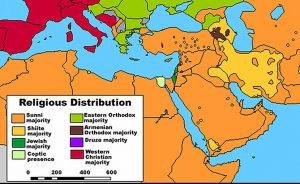
The events of 9/11 brought to the forefront, in many ways, the true nature of Wahhabism, fighting the Christian West by means of terrorism and violence. Al-Qaeda took upon itself this mission wreaking havoc in many cities of the World and encouraging the rise of Islamophobia, thereby.
After the death of Zarkaoui in Iraq in 2008 the influence of Al-Qaeda receded, but soon there appeared the Islamic State of Iraq and the Levant (ISIL) known, also, as the Islamic State of Iraq and Syria or ISIS — more lethal, more brutal and more bellicose towards Arab Christians. Thus the Yazidi Christians were sequestered, abused and maltreated: their men killed and their women raped and daughters used as sexual slaves. On the Yazidis genocide, The Guardian writes:
“Gruesome images of brutally slain people have emerged in the past week, as local officials say that at least 500 Yazidis, including 40 children, have been killed, and many more have been threatened with death. Roughly 130,000 residents of the Yazidi stronghold of Sinjar have fled to Dohuk, in Iraqi Kurdistan to the north, or to Irbil.
Reports of violence, repression and murder by Isis and other extremist groups have become increasingly prevalent in Iraq. Christians have also been targeted for their faith. The country’s largest Christian city was all but abandoned on Thursday, as Isis advanced through minority communities in the north-west.”
Feeling the danger of death getting closer to their communities and homeland in the Middle East, many well-to-do Arab Christians started migrating to Europe to escape the Islamist hell and this was the beginning of the painful flight of Arab Christians to Europe and other Western havens.
In 2011, Arab uprisings materialized in many Arab countries bringing the Islamists to power In Egypt, the dictator Mubarak was swept aside and the Ikhwan won both the general and presidential elections. Morsi became the first ever democratically-elected President of Egypt. Immediately after attacks on the Copts increased, their churches were burned down and some faithful killed. Morsi wanted a Muslim Constitution for Egypt. Alarmed the secular army threw Morsi out and enthroned a general of its own: Al-Sisi, to save Egypt from disintegration and genocide.
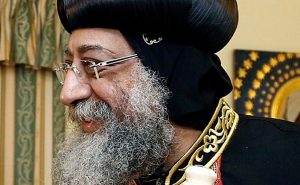
The Copts, who constitute 10% of the population of Egypt estimated at 94 millions feel today persecuted and fragile in Egypt where they have lived alongside Muslims for centuries. The rise of Islamism in the Arab world has made out of them some sort of fifth column in the eyes of the extremists who blame the Christian West for all the problems and ailments of the lands of Islam.
The extremists, on purpose, overlook the fact that the Christian minorities are as Arab as their Muslim brethren: speak the same language, eat the same bread and endure the same hardships. The truth is throughout history, Arab Christian intellectuals defended Islam more than the Muslims themselves, proof of that is the hundreds of books written in various languages explaining Islam to the western readership (see the bibliography given here below,) but, alas, today, they are seen in bad light and extremists take aim at them for no reason except racism, hatred and intolerance.
The prophet Muhammad during his life time, after been persecuted by his own tribe of Qoraich in Mecca left for Medina and encouraged some of his followers to go to Ethiopia where they found refuge among the Christians there, who treated them with much humanity, deference and friendship. The Prophet himself was well treated by the Jews of Yathrib during the period of his flight from the persecution of his tribesman of Mecca.
So persecuting Christians is going against the philosophy of Islam that calls for the total respect of all the religions of the book and the people of the book: ahl al-kitab. Islam lived in total harmony with Judaism and Christianity in Andalusia from 711 to 1492; Muslims were political leaders, Christians, commanders of the armies and Jews ministers and advisors.
Therefore there is no place for any thought of persecution in Islam of people of other religions, it is only in the mind of people who want to use religion as an ideology to grab power and subjugate even their coreligionists.
But, the truth of the matter is that the Arab Christians do not feel comfortable in the Arab world, especially after the Arab Spring because Islamists eye them with suspicion and much antagonism, for no reason, whatsoever.
In this regard Sandarsan Raghavan writes in The New York Times in an article entitled: “In post-Arab Spring Egypt, Muslim attacks on Christians are rising”:
“At a time when President Abdel Fatah al-Sissi’s government is jailing its opponents and struggling to revive a sinking economy, the violence adds a new layer of populist frustration: Christians strongly supported Sissi’s rise, expecting him to protect them after the former army general led a coup that toppled the Islamists.
“As Egyptian citizens, Christians don’t feel they are equal to their Muslim counterparts,” said Bishop Makarios, the head of the Coptic diocese in Minya province, where Asem is situated. “They feel oppressed, and marginalized by the law.”
Christians across the region have endured horrific assaults in the turbulent aftermath of the Arab Spring uprisings.
In Syria and Iraq, Islamic State militants have destroyed churches, abducted Christians and carried out forced conversions. Thousands of Christians have fled their homes in northern Iraq. In Libya last year, Islamic State militants beheaded 21 Egyptian Christians and an additional 31 Ethiopian and Eritrean Christians in two separate attacks. And earlier this year, the Islamic State’s affiliate in Egypt asserted responsibility for the fatal shooting of a priest.
In Egypt, a “disturbing wave of radicalism” has emerged from the uprising and changes in government and as the economy has worsened, said Bishop Angaelos, head of the Coptic Orthodox Church in the United Kingdom.”
Islamism Is Waning And Hope Is Back
The Arab world, as it is does not have, even, today a strict policy or laws on ethnic groups and religions, leaves room for extremists to commit atrocities, in the name of the glory of Islam, of course. Indeed, most countries recognize only Islam as a religion and Arab as language and ethnic group, the Amazigh/Berbers of North Africa still suffer atrociously, today, from isolation and veiled sequestration. Their rights are recognized in Morocco and Algeria but not in Tunisia and Libya. The Kurds scattered in many countries are always used and abused by every country of the region and the West, also, and then shamefully abandoned.
The Copts, Yazidis, Assyrians and many Christians of the Orient are totally ignored, not to mention of course the Shiites, Bahais and other religious minorities. What is obviously needed is a political will to declare the Middle East multicultural and multi-confessional to safeguard the rights of minorities such as the Christian Arabs that have defended Islam for centuries.
All in all, time has come to declare the MENA region fully multicultural and, thus, safeguard the lives, interests, cultures and religions of its diverse people. Let us hope this materializes in the near future. Amen.
You can follow Professor Mohamed Chtatou on Twitter: @Ayurinu
Endnotes:
1. https://en.wikipedia.org/wiki/Arab_Christians
2. https://en.wikipedia.org/wiki/Arab_Christians
Arab Christians (Arabic: مسيحيون عرب Masīḥiyyūn ʿArab) are Arabs of the Christian faith. Many are descended from ancient Arab Christian clans that did not convert to Islam, such as the Kahlani Qahtanite tribes of Yemen (i.e., Ghassanids, and Banu Judham) who settled in Transjordan and Syria, as well as Arabized Christians, such as Melkites and Antiochian Greek Christians. Arab Christians, forming Greek Orthodox and Greek Catholic communities, are estimated to be 520,000–703,000 in Syria, 221,000 in Jordan,134,130 in Israel and around 50,000 in Palestine. There is also a sizable Arab Christian Orthodox community in Lebanon and marginal communities in Iraq, Turkey and Egypt. Emigrants from Arab Christian (including Melkite-Antiochian Greek Christians) communities make up a significant proportion of the Middle Eastern diaspora, with sizable population concentrations across the Americas, most notably in Argentina, Brazil, Chile, Mexico, Venezuela, Colombia, and the US.
The first Arab tribes to adopt Christianity were likely Nabataeans and Ghassanids. During the fifth and sixth centuries, the Ghassanids, who at first adopted monophysitism, formed one of the most powerful confederations allied to Christian Byzantium, being a buffer against the pagan tribes of Arabia. The last king of the Lakhmids, al-Nu’man III ibn al-Mundhir, a client of the Sasanian Empire in the late sixth century, also converted to Christianity (in this case, to the Nestorian sect). Arab Christians played important roles in al-Nahda movement in modern times, and because Arab Christians formed the educated upper class and the bourgeoisie, they have had a significant impact in politics, business and culture of the Arab world. Today Arab Christians still play important roles in the Arab world, and Christians are relatively wealthy, well educated, and politically moderate.
Arab Christians are not the only Christian group in the Middle East, with significant non-Arab indigenous Christian communities of Assyro-Chaldeans, Arameans, Armenians and others. Although sometimes classified as “Arab Christians”, the largest Middle Eastern Christian groups of Maronites and Copts often claim non-Arab ethnicity: a significant proportion of Maronites claim descent from the ancient Phoenicians while Copts also eschew an Arab identity, preferring an Ancient Egyptian one
3. https://www.merriam-webster.com/dictionary/Baathism
Merriam Webster dictionary
Definition of Baathism: the principles and policies of the Baath political party of Iraq and Syria characterized especially by promotion of pan-Arab socialism.
4. https://en.wikipedia.org/wiki/Michel_Aflaq
5. http://carnegie-mec.org/diwan/54844
6. https://en.wikipedia.org/wiki/Abd_al-Hamid_Kishk
7. https://www.theatlantic.com/photo/2014/08/the-soviet-war-in-afghanistan-1979-1989/100786/
8. https://www.telegraph.co.uk/news/worldnews/asia/afghanistan/1326063/After-1700-years-Buddhas-fall-to-Taliban-dynamite.html
9. https://en.wikipedia.org/wiki/Yazidis
10. https://www.theguardian.com/world/2014/aug/07/who-yazidi-isis-iraq-religion-ethnicity-mountains
11. https://www.newyorker.com/magazine/2018/02/26/the-daring-plan-to-save-a-religious-minority-from-isis
12. https://www.washingtonpost.com/world/middle_east/in-post-arab-spring-egypt-muslim-attacks-on-christians-are-rising/2016/11/13/f50a18e2-84fc-11e6-b57d-dd49277af02f_story.html?utm_term=.cc58a29261fc
13. https://www.eurasiareview.com/30072017-aspects-of-religious-and-cultural-diversity-in-middle-east-and-north-africa-analysis/
Christianity in the Middle East: Books
Abu-Munshar, M. Islamic Jerusalem and Its Christians: A History of Tolerance and Tensions. London: Tauris Academic Studies, 2007.
Adams, S. Christian Family Guide Explains the Middle East Conflict. Waltham: Alpha, 2003.
Andrew, B. and A. Janssen. Light Force: A Stirring Account of the Church Caught in the Middle East Crossfire. Ada: Baker Publishing Group, 2005.
Apostolov, M. The Christian Muslim Frontier: A Zone of Contact, Conflict or Cooperation. New York: Routledge Curzon, 2003.
Ascalone, E. Mesopotamia: Assyrians, Sumerians, Babylonians. Berkeley: University of California Press, 2007.
Atiya, A. S. A History of Eastern Christianity. Germantown: Periodicals Service Company, 1980.
Bailey, B. J., and J. M. Bailey. Who Are the Christians in the Middle East? Grand Rapids: WM. B. Eerdmans Publishing Co., 2003.
Betts, R. B. Christians in the Arab East: A Political Study. Edinburgh: Westminster John Knox Press, 1981.
Chacour, E. Blood Brothers. Grand Rapids: Chosen Books, 1984.
Chamie, J. Religion and Fertility: Arab Christian-Muslim Differentials. New York: Cambridge University Press, 1981.
Courbage, Y. and P. Fargues. Christians and Jews under Islam. London: I.B. Tauris, 1998.
Cragg, K. The Arab Christian: A History in the Middle East. Edinburgh: Westminster John Knox Press, 1991.
Cragg, K. Muhammad and the Christian: A Question of Response. Oxford: Oneworld Publications, 1999.
Dalrymple, W. From the Holy Mountain: A Journey among the Christians of the Middle East. New York: Henry Holt & Company, Incorporated, 1999.
Dass, R. F. The Middle East Christians: The Untold Story. Oak Park, MI: American Middle East Christian Congress, n.d.
Edbury, P. W. Kingdom of Cyprus and the Crusades, 1191-1374. Cambridge: Cambridge University Press, 1993.

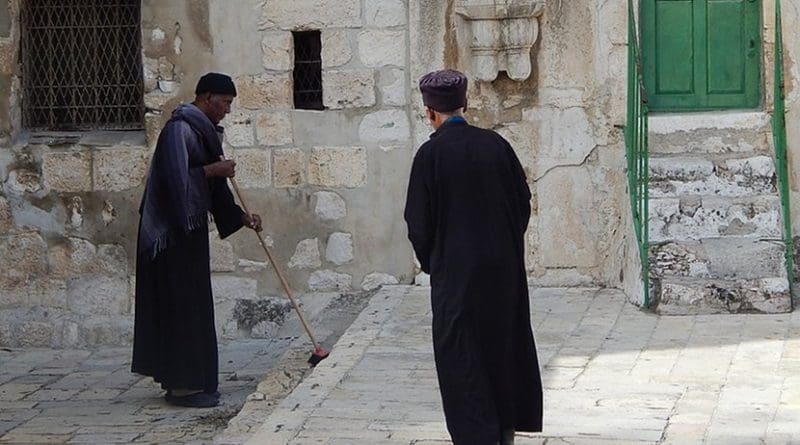
I appreciate the information presented here, but maronites have never been out of communion with the pope of Rome